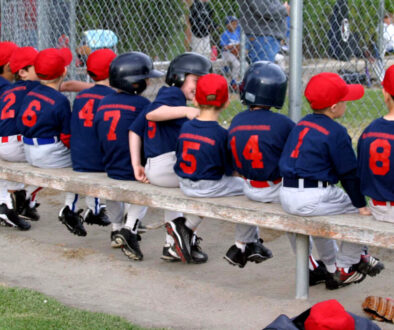Tips for Scheduling Rec Sports
Scheduling on public athletic fields or courts can be complicated. Make it easier with these scheduling tips
In many ways, nonprofit sports organizations (parks and rec departments, rec leagues, public athletic fields and complexes, and school-based sports) have more complicated scheduling needs than private sports academies and complexes do.
For-profit facilities should have a pretty simple process for reserving space, especially if they’re using scheduling software: admins set rules for how space can be rented and reserved, and then clients log in and pay for any available space – which is then reserved on a shared calendar for all to see.
But things get more complicated when teams and coaches all have the right to request field or court space, and a scheduler has to manually approve or deny each request based on a variety of priorities.
When you’re managing sports schedules on a request-and-approval basis, like many rec leagues, school districts and parks & rec departments do, here are some best practices.
1. Put mandatory events on the calendar before you open it to scheduling requests.
Find out the gym cleaning or field maintenance schedules, and think through any time the space will be unavailable (such as for holidays, construction and renovation projects and school events). Block off those times on your calendar before you invite coaches and instructors to request space.
2. Publish a clear set of priorities, procedures and deadlines.
To eliminate confusion and internal politics, everyone who requests space should understand exactly how scheduling is prioritized. Is it first-come, first served, or are other accommodations made? Also make sure all potential schedulers understand:
- how far in advance requests can be made
- how much advance notice is required before a requested event
- how soon coaches can expect a response to their requests
- how coaches can get confirmation for their reserved time
- circumstances that might cause schedule changes or cancellations (such as severe weather and other emergencies)
- your procedure for rescheduling cancelled events (as well as handling requests to reschedule)
- which representatives of any given team are authorized to make scheduling requests
3. Require all requests to be made the same way.
It’s impossible to keep requests organized when they’re coming in from multiple people and mediums (email, phone, and in person). If you’re not using a scheduling software, I’d suggest requiring all the requests to be made by email – you could even recommend a specific subject line for scheduling requests so you’ll notice them as they come in. If coaches try to mention their schedules to you on the phone or in person, kindly remind them that they have to email any official scheduling request in order for it to be considered.
4. Make sure requests are time-stamped, and keep the records.
If you use a software program or even require requests by email, the requests will be time-stamped automatically. If you’re still going to accept requests by phone or in person, you need to make some record of when you received each one. Keeping these records can be extremely helpful in the case of any conflicts.
5. Use one central online calendar, and limit access to it.
The more people have access to make changes to a schedule, the more confusing it gets – and the more chance there is for error. Requiring everyone to use the same calendar, updated in real-time, is a good start. Using a system that actually tracks changes to the calendar is even better. Some systems (including mine) even let you limit people to scheduling in certain locations.
6. Seriously consider using scheduling software.
Unless you use scheduling software that’s built for the needs of an athletic field scheduler or a parks & rec department, you’ll probably find yourself responding to every single request manually, then retyping the event details onto a (hopefully shared) calendar.
A software program like eSoft Planner allows admins to view a list of pending requests and approve or deny each one – email and text confirmations are sent upon your review, and approved requests are automatically placed on the shared calendar.
Saving just a few hours of admin work (or eliminating miscommunication that causes hours of extra work) is often enough to completely cover the cost of the software.
If you’d like to see it, just fill out the short form here to request a free demo. Here are some other things eSoft Planner can do for your rec league, parks and rec department or school district:
- quickly alert all teams and coaches to closures and schedule changes
- send automatic email and text reminders to teams and coaches for upcoming scheduled events
- schedule future and repeating closings (such as for holidays)
- easily schedule recurring events (such as practices for the entire season)
- choose which staff can approve schedule requests
- limit scheduling in certain locations to certain schedulers
- view reports by location and by time, and view total approved and denied scheduling requests
- allow all your staff and coaches to access the schedules online easily by computer, tablet or phone (with a fully responsive design)
We look forward to hearing from you soon. If you have any other feedback, please leave a comment below. For more advice on how to improve your facility, book a consultation with our experts.



